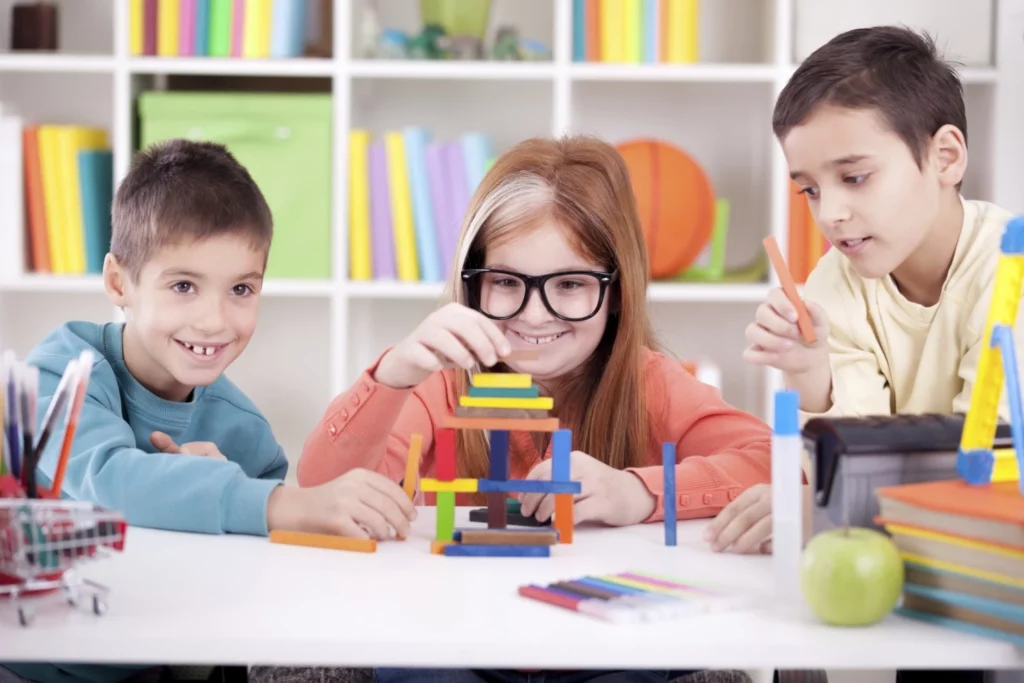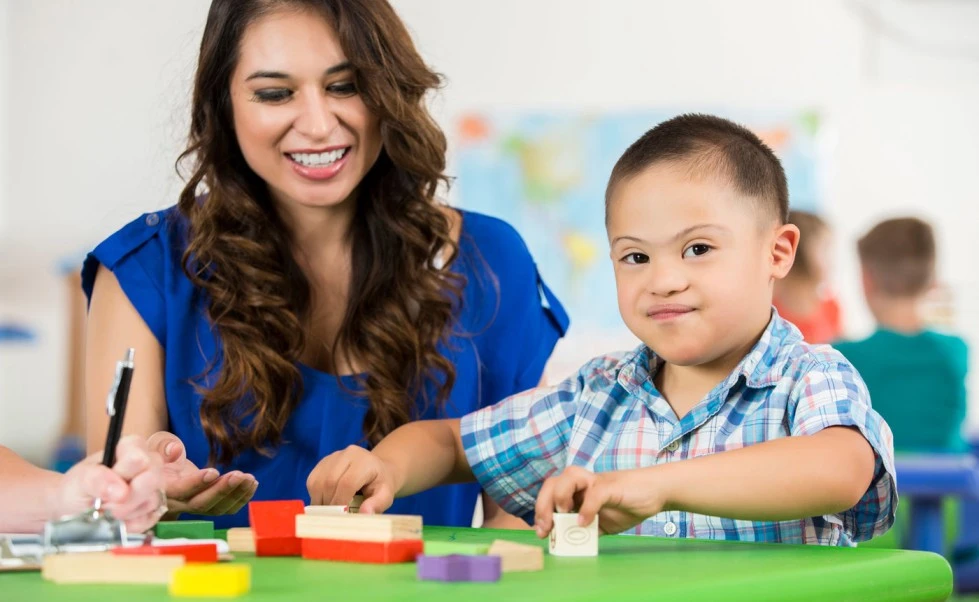Contents
Inclusive education will be a transformative approach that will bring benefits to all students. As we embark on this journey, it is clear that creating an inclusive classroom for children with special needs will become a fundamental goal for educators. Throughout this post, we will delve into key points that will guide educators in building an environment where every child can flourish.
- First and foremost, we will emphasize the significance of inclusivity in education. By embracing diversity, fostering acceptance, and celebrating individual strengths, educators will lay the foundation for a sense of belonging and cultivate positive social interactions among all students.
- Next, we will explore practical strategies for establishing an inclusive classroom. Implementing Universal Design for Learning (UDL) principles, employing differentiated instruction, fostering collaboration with special education professionals and parents, and creating sensory-friendly environments will emerge as effective approaches to meet the unique needs of students with special needs.
- Furthermore, we will highlight the importance of providing comprehensive support for the development of children with special needs. From offering assistive technology and adaptive tools to delivering individualized support through personalized educational plans, educators will play a vital role in empowering every child to unlock their full potential.
By the end of this post, you will gain a deep understanding that inclusive education promotes equal opportunities, nurtures empathy and acceptance, and supports the overall well-being and academic progress of children with special needs. By implementing the strategies discussed, educators will have the power to foster a supportive and empowering learning environment where every child can thrive and achieve success.
Practical Video Guide: Special Education Teaching Strategies
As a bonus, we have discovered a valuable video titled “Special Education Teaching Strategies” that serves as a practical guide to support your journey in creating an inclusive classroom. This video provides firsthand insights and demonstrations of effective teaching strategies specifically tailored for special education. By watching this video, you will gain valuable tips and techniques to implement in your classroom, enhancing the learning experience for children with special needs.
Many educators face the challenge of creating an inclusive classroom that effectively caters to the unique needs of children with special needs.
Without an inclusive environment, these children may face exclusion, limited opportunities, and barriers to their learning and social development. This can lead to feelings of isolation, low self-esteem, and hindered academic progress.
This blog post will provide valuable insights and practical strategies to help educators create an inclusive classroom where children with special needs can thrive. By reading this post, the audience will gain the following:
- Understanding: Learn about the importance of inclusivity and gain a deeper understanding of the diverse needs of children with special needs.
- Effective Strategies: Discover proven strategies and techniques to adapt teaching methods, accommodate individual needs, and foster an inclusive learning environment.
- Empowerment: Acquire the knowledge and tools to empower children with special needs, promoting their academic and social growth while cultivating a sense of acceptance and empathy among all students.
This blog post will equip educators with the necessary knowledge and practical strategies to create an inclusive classroom that supports the diverse needs of children with special needs, fostering a positive and empowering learning environment for all.
Building an Inclusive Classroom: Empowering Children with Special Needs

Understanding the Importance of Inclusivity in Education
- Inclusive education plays a crucial role in cultivating an enriching classroom environment that prioritizes the overall well-being and growth of children with special needs.
- By fostering inclusivity, an inclusive classroom fosters a sense of belonging, acceptance, and empathy among all students, promoting enhanced social interactions and relationships.
- Through embracing the principles of inclusive education, diverse strengths are celebrated, allowing each child to contribute and learn from one another, creating a harmonious and dynamic learning community.
- Inclusive education ensures equal educational opportunities are provided, supporting the academic progress of children with special needs alongside their peers.
- By embracing inclusive education, educators prepare all students for the realities of the real world, instilling values of respect, tolerance, and acceptance of individual differences, thus creating a more compassionate and inclusive society.
Strategies for Creating an Inclusive Classroom

Practical Approaches to Foster Inclusion
- Inclusive education is enhanced through the implementation of Universal Design for Learning (UDL) principles, ensuring that instructional materials and activities are accessible and cater to diverse learning styles and abilities.
- Through differentiated instruction, educators have the ability to customize teaching methods and content, addressing the unique needs and strengths of each student, promoting an inclusive learning experience.
- Collaboration with special education professionals and active involvement of parents in the educational process create a strong support network, fostering an inclusive environment for children with special needs.
- Inclusive education embraces the creation of sensory-friendly environments by incorporating visual cues, designated quiet areas, and flexible seating arrangements, accommodating students with sensory processing difficulties.
- Peer interactions and positive relationships are actively promoted in an inclusive classroom through team-building activities and cooperative learning, further fostering inclusivity and a sense of belonging among students.
Supporting the Development of Children with Special Needs

Empowering the Potential of Every Child
- Inclusive education is strengthened through the provision of assistive technology and adaptive tools, empowering children with special needs to actively engage in classroom activities and enriching their overall learning experience.
- Individualized support is offered through personalized educational plans, such as Individualized Education Programs (IEPs), effectively addressing specific learning goals and accommodations, thus promoting inclusive education.
- The development of social skills programs and implementation of positive behavior management strategies are vital in supporting the social-emotional growth and well-being of children with special needs, fostering inclusivity within the classroom.
- Creating a culture of inclusivity is achieved through raising awareness, organizing awareness campaigns, and celebrating diversity, ensuring a warm and accepting classroom environment conducive to inclusive education.
- Continuous professional development and collaboration with colleagues and specialists are key in enabling educators to remain updated with best practices in inclusive education, further enhancing their ability to provide quality support and guidance to all students.
By following the strategies and approaches outlined in this article, educators can create an inclusive classroom that supports the holistic development and success of children with special needs, fostering a positive and empowering learning environment for all students.

Inclusive education is a transformative approach that brings benefits to all students, and as we conclude, it is evident that creating an inclusive classroom for children with special needs is a fundamental goal for educators. Throughout this post, we have delved into key points to guide educators in building an environment where every child can flourish.
- First and foremost, we emphasized the significance of inclusivity in education. By embracing diversity, fostering acceptance, and celebrating individual strengths, educators lay the foundation for a sense of belonging and cultivate positive social interactions among all students.
- Next, we explored practical strategies for establishing an inclusive classroom. Implementing Universal Design for Learning (UDL) principles, employing differentiated instruction, fostering collaboration with special education professionals and parents, and creating sensory-friendly environments emerged as effective approaches to meet the unique needs of students with special needs.
- Furthermore, we highlighted the importance of providing comprehensive support for the development of children with special needs. From offering assistive technology and adaptive tools to delivering individualized support through personalized educational plans, educators play a vital role in empowering every child to unlock their full potential.
By the end of this post, you have gained a deep understanding that inclusive education promotes equal opportunities, nurtures empathy and acceptance, and supports the overall well-being and academic progress of children with special needs. By implementing the strategies discussed, educators have the power to foster a supportive and empowering learning environment where every child can thrive and achieve success.
If you’re seeking further guidance and practical steps to effectively teach students with disabilities in inclusive classrooms, study.com offers a valuable resource: “Teaching Students with Disabilities in Inclusive Classrooms.” This comprehensive article provides in-depth insights, strategies, and actionable steps to support the diverse needs of students with disabilities.
For additional support and resources for special needs families, we invite you to explore our blog article titled “Building a Support Network: Resources for Special Needs Families.” This informative piece provides a comprehensive list of valuable resources, organizations, and online communities that can offer guidance, assistance, and a sense of community to families navigating the journey of raising a child with special needs.